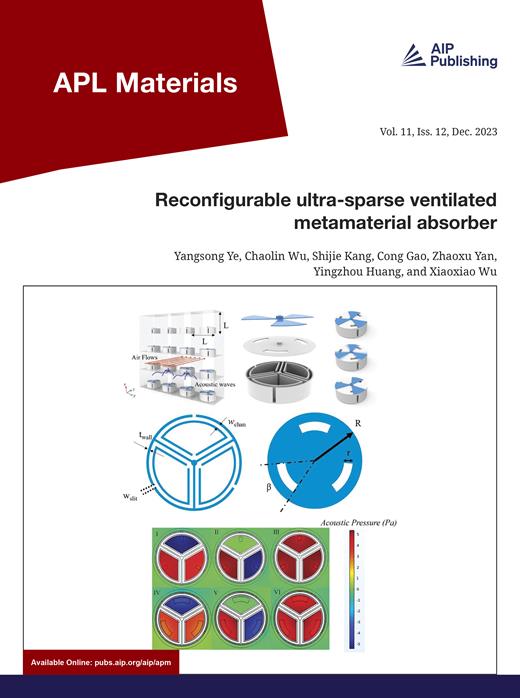Thermal contribution to current-driven antiferromagnetic-order switching
IF 5.3
2区 材料科学
Q2 MATERIALS SCIENCE, MULTIDISCIPLINARY
引用次数: 0
Abstract
In information technology devices, current-driven state switching is crucial in various disciplines including spintronics, where the contribution of heating to the switching mechanism plays an inevitable role. Recently, current-driven antiferromagnetic order switching has attracted considerable attention due to its implications for next-generation spintronic devices. Although the switching mechanisms can be explained by spin dynamics induced by spin torques, some reports have claimed that demagnetization above the Néel temperature due to Joule heating is critical for switching. Here, we present a systematic method and an analytical model to quantify the thermal contribution due to Joule heating in micro-electronic devices, focusing on current-driven octupole switching in the non-collinear antiferromagnet, Mn3Sn. The results consistently show that the critical temperature for switching remains relatively constant above the Néel temperature, while the threshold current density depends on the choice of substrate and the base temperature. In addition, we provide an analytical model to calculate the Joule-heating temperature, which quantitatively explains our experimental results. From numerical calculations, we illustrate the reconfiguration of magnetic order during cooling from a demagnetized state of polycrystalline Mn3Sn. This work provides not only deeper insights into magnetization switching in antiferromagnets, but also a general guideline for evaluating the Joule-heating temperature excursions in micro-electronic devices.热对电流驱动反铁磁阶切换的贡献
在信息技术设备中,电流驱动的状态切换在包括自旋电子学在内的各个学科中都至关重要,而加热对切换机制的贡献在其中起着不可避免的作用。最近,电流驱动的反铁磁阶次切换因其对下一代自旋电子器件的影响而备受关注。虽然开关机制可以用自旋力矩诱导的自旋动力学来解释,但一些报道称焦耳加热导致的奈尔温度以上的退磁是开关的关键。在此,我们提出了一种系统方法和一个分析模型,用于量化微电子器件中焦耳加热引起的热贡献,重点研究非共轭反铁磁体 Mn3Sn 中电流驱动的八极开关。结果一致表明,开关的临界温度在奈尔温度之上保持相对恒定,而阈值电流密度则取决于基底和基底温度的选择。此外,我们还提供了一个计算焦耳热温度的分析模型,该模型可以定量解释我们的实验结果。通过数值计算,我们说明了多晶 Mn3Sn 从退磁状态冷却过程中磁序的重新配置。这项工作不仅加深了我们对反铁磁体磁化切换的理解,还为评估微电子器件的焦耳热温度偏移提供了一般指导。
本文章由计算机程序翻译,如有差异,请以英文原文为准。
求助全文
约1分钟内获得全文
求助全文
来源期刊

APL Materials
NANOSCIENCE & NANOTECHNOLOGYMATERIALS SCIE-MATERIALS SCIENCE, MULTIDISCIPLINARY
CiteScore
9.60
自引率
3.30%
发文量
199
审稿时长
2 months
期刊介绍:
APL Materials features original, experimental research on significant topical issues within the field of materials science. In order to highlight research at the forefront of materials science, emphasis is given to the quality and timeliness of the work. The journal considers theory or calculation when the work is particularly timely and relevant to applications.
In addition to regular articles, the journal also publishes Special Topics, which report on cutting-edge areas in materials science, such as Perovskite Solar Cells, 2D Materials, and Beyond Lithium Ion Batteries.
 求助内容:
求助内容: 应助结果提醒方式:
应助结果提醒方式:


